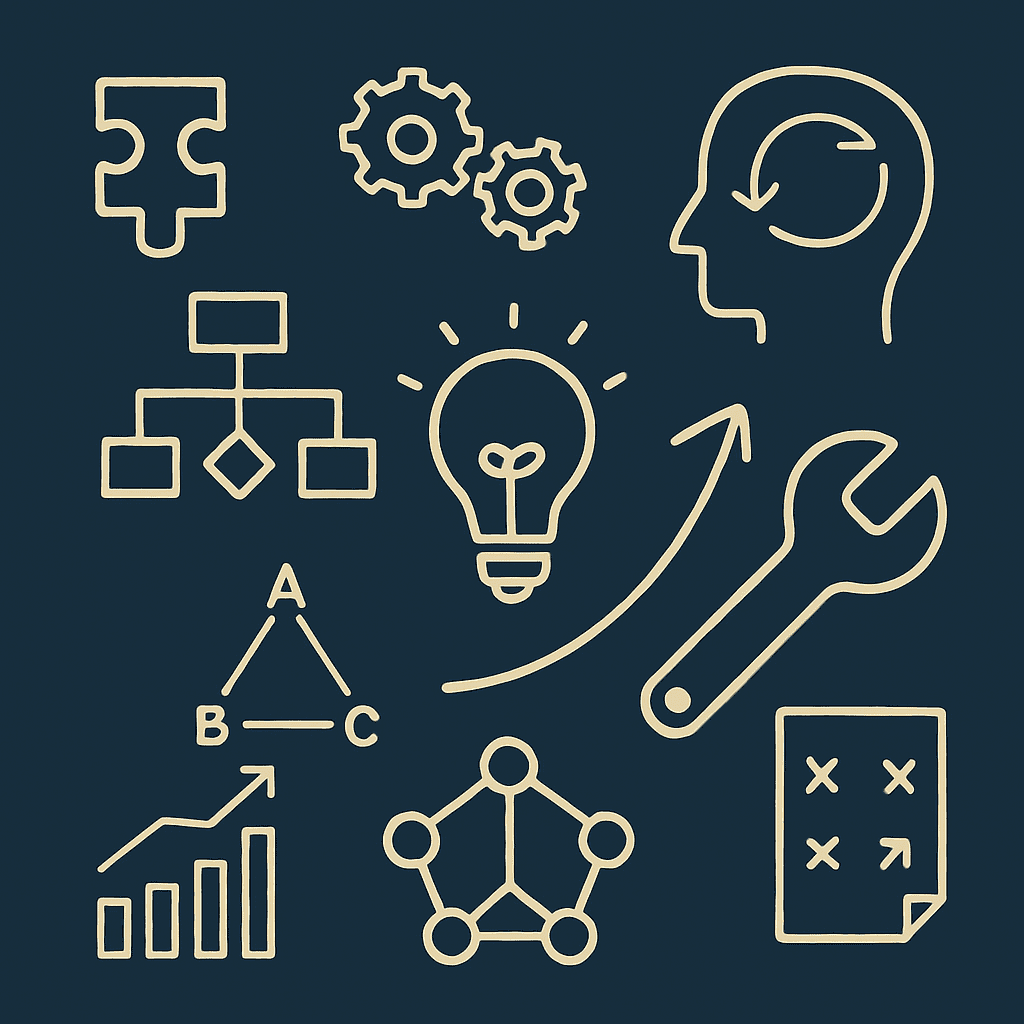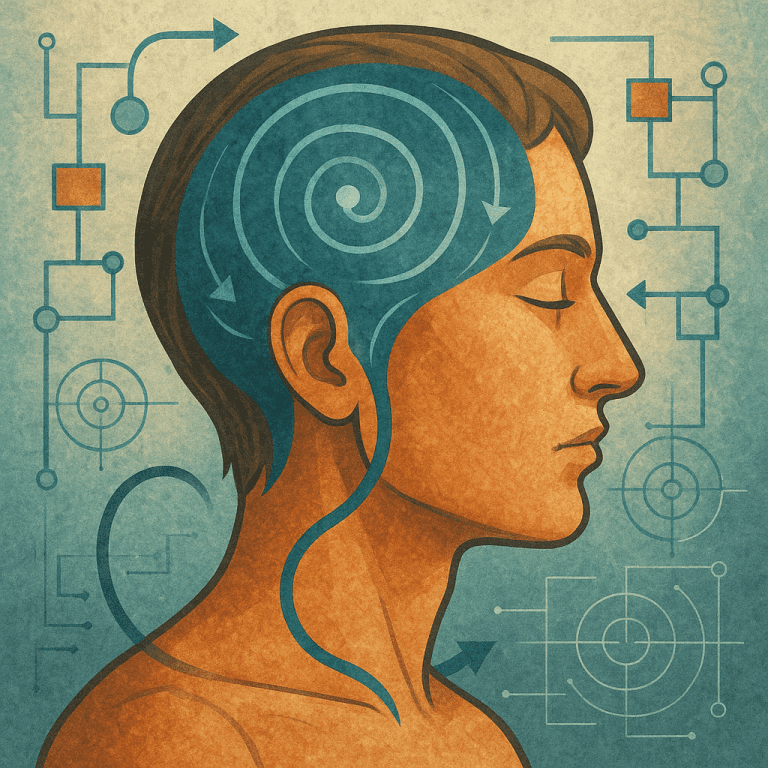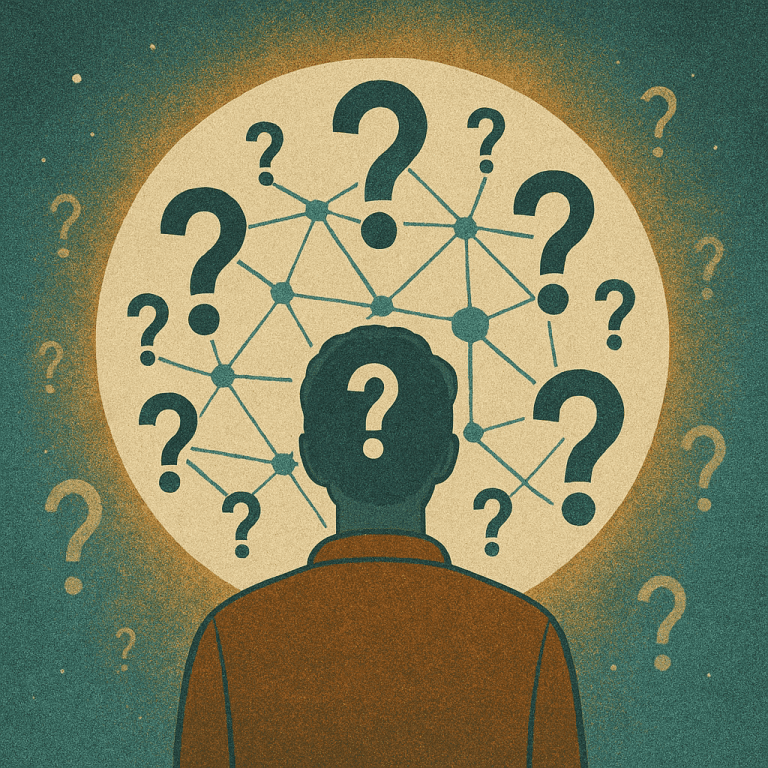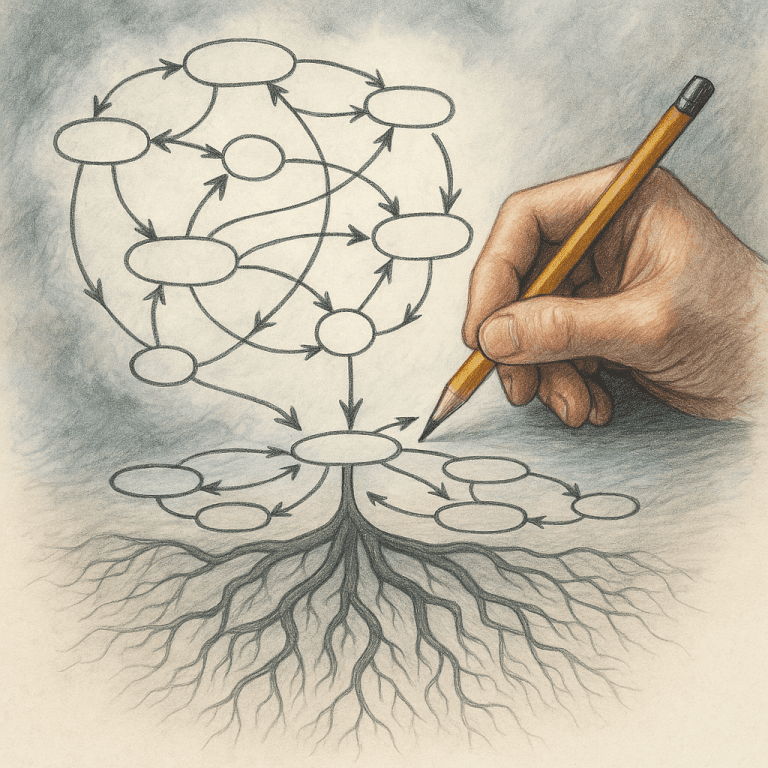Bridge Your Current Practice with Systemic Insight
In the fast-paced world of consulting, we often reach instinctively for the tools we know.
We’ve run countless “5 Whys” sessions. We’ve crafted stakeholder maps in neat grids. We’ve drawn influence diagrams that help teams see cause and effect more clearly.
And to be fair — these tools work.
Up to a point.
But then, complexity happens.
You fix one issue, only to watch the same problem reappear in a different department.
You identify key stakeholders, only to realize too late that influence came from an unexpected corner.
You draw linear connections, and suddenly you’re caught off guard by feedback loops and ripple effects no one anticipated.
Is the problem with the tool itself?
Not quite.
The real opportunity lies in the lens we bring to it.
In this post, we’ll explore how to breathe systems thinking into three familiar tools — Root Cause Analysis, Stakeholder Analysis, and Influence Diagrams — and in doing so, unlock a deeper, more powerful way of practicing with what you already know.
🔍 1. Root Cause Analysis (e.g., 5 Whys)
From Linear Digging to Pattern Recognition
The “5 Whys” technique is simple: keep asking why until you get to the root.
But in complex systems, there is rarely just one root.
What if the issue isn’t a tunnel to dig…
…but a web to map?
🧠 Reframed with Systems Thinking:
- Widen the frame across time and context: Instead of asking only “Why now?”, also ask “Why here?”, “Why repeatedly?”, and “Why only for this team?”
- Uncover feedback, not just sequence: Look for loops where effects reinforce or counteract the original cause.
- Consider structures, not just symptoms: Examine what systemic conditions — incentives, policies, mental models — might be producing repeating behaviors.
- Recognize delay and drift: What may seem like a distant or historical decision could be influencing today’s problem invisibly but powerfully.
✏️ Example:
In a basic root cause session, a team finds “low morale” at the root of customer complaints.
But a systemic version might look like this:
- Morale is low due to burnout and micromanagement.
- Micromanagement stems from mid-level leaders under pressure.
- Pressure arises from centralized decisions and KPI overload.
- KPIs exist because of an outdated belief that “tight control equals quality.”
👉 What’s the real root? A self-reinforcing cultural loop.
Your intervention shifts from treating morale to transforming how autonomy and trust are distributed systemically.
👥 2. Stakeholder Analysis
From Static Maps to Living Relationships
Traditional stakeholder maps are great for clarity: plot who’s powerful, who’s resistant, who’s supportive.
But in a system, influence is rarely static — it evolves, flows, and adapts over time.
🧠 Reframed with Systems Thinking:
- Map relationships, not just roles: Who influences whom? What informal networks shape behavior?
- Include the invisible: Whose absence speaks volumes? Whose voice is quietly shaping the room?
- Account for feedback: How do stakeholders respond to system changes — and how does that, in turn, reshape the system?
- Unpack mental models: What stories are stakeholders telling themselves? What assumptions guide their stance?
✏️ Example:
A policy reform effort maps out the obvious players: ministries, agencies, NGOs.
A systemic lens reveals:
- Media framing reinforces public mistrust, which pressures ministers into short-term optics.
- Frontline staff feel caught between top-down efficiency metrics and bottom-up service complexity — a classic “Shifting the Burden” archetype.
- Citizens, after years of unmet promises, disengage. Their silence becomes a feedback loop that deepens political inaction.
👉 Now you’re not just “managing resistance.” You’re seeing systemic behavior — and identifying the subtle leverage points to shift the system.
🔗 3. Influence Diagrams
From Straight Arrows to Feedback Architectures
Influence diagrams are beloved for their clarity: this leads to that.
But real systems rarely behave that way.
They loop.
They delay.
They amplify, dampen, or adapt based on history.
🧠 Reframed with Systems Thinking:
- Draw the loops: Make feedback visible. Show how actions cycle back over time.
- Mark delays and accumulations: Use stocks, flows, and time markers to show where energy builds up or where responses lag.
- Label loops as Reinforcing (R) or Balancing (B): This instantly reveals which parts drive change and which parts stabilize.
- Add soft variables: Trust, fear, expectation, narrative — these shape systems powerfully, even if they’re not easily measurable.
✏️ Example:
A simple influence chain:
Product Design → Customer Satisfaction → Customer Retention → Revenue
Systemic reframing might show:
- Retention loops into feedback that improves (or breaks) future design.
- Satisfaction builds Reputation, which shapes Expectations — which pre-shape experience.
- Revenue funds new design cycles — or cuts them, if short-termism takes hold.
👉 The flat map becomes a living system. You now see not just what is happening — but why and where to intervene with impact.
💬 Real Talk: Why This Matters
You don’t need to throw away your toolkit.
But you do need to upgrade your lens.
By applying systems thinking to the tools you already trust, you gain:
✅ A more honest view of complexity
✅ A sharper eye for unintended consequences
✅ Deeper empathy for the actors involved
✅ Access to higher-leverage interventions
This isn’t about replacing your skillset.
It’s about enhancing it — so you can do what you already do, but with more clarity, more wisdom, and more sustainable results.
🛠 Mini-Practice: Reframe a Root Cause Exercise
Pull up a recent RCA you’ve done.
Now, with a systems lens, ask:
- Did I chase a single cause — or did I map interacting factors?
- Did I spot patterns across teams or time?
- Did I consider systemic structures and cultural assumptions?
- Did I ask, “Where is the feedback?” or “What are we unintentionally reinforcing?”
Even five minutes of reflection can completely reshape how you see that issue — and elevate how you approach the next one.
🧠 Final Thought
Tools alone don’t produce insight.
The lens you use to apply them does.
When you bring systems thinking into your everyday practice, familiar tools become powerful vessels for transformation.
A “5 Whys” becomes a map of feedback loops.
A stakeholder matrix becomes a mirror into system dynamics.
An influence diagram becomes a blueprint for change.
You don’t need to learn a dozen new techniques.
You just need to see differently.
And in that shift — from technician to system-sensemaker — lies the true power of modern consulting.
So go back to the basics.
But this time, with the wisdom to look beneath them.
- The Whisper of the Whole: A Systems Thinking Guide for Consultants
- What is a System, Really?
- The Living Dance of Systems
- Resilience and the Wisdom of Adaptive Systems
- Roots of Insight
- The Systems Thinker’s Compass
- Drawing Complexity
- Peering Below the Surface
- Master Methodologies in Systems Thinking
- Enhancing Familiar Tools with Systems Thinking
- Transforming Business Through Systems Thinking
- Systems Thinking in Public Policy & Governance
- Sustainable Systems
- Systems Thinking for Engineering & Technology
- The Inner System: You
- The Roadblocks
- The Future of Systems Thinking
- Systems Thinking FAQ: Myths, Misunderstandings & Core Insights







